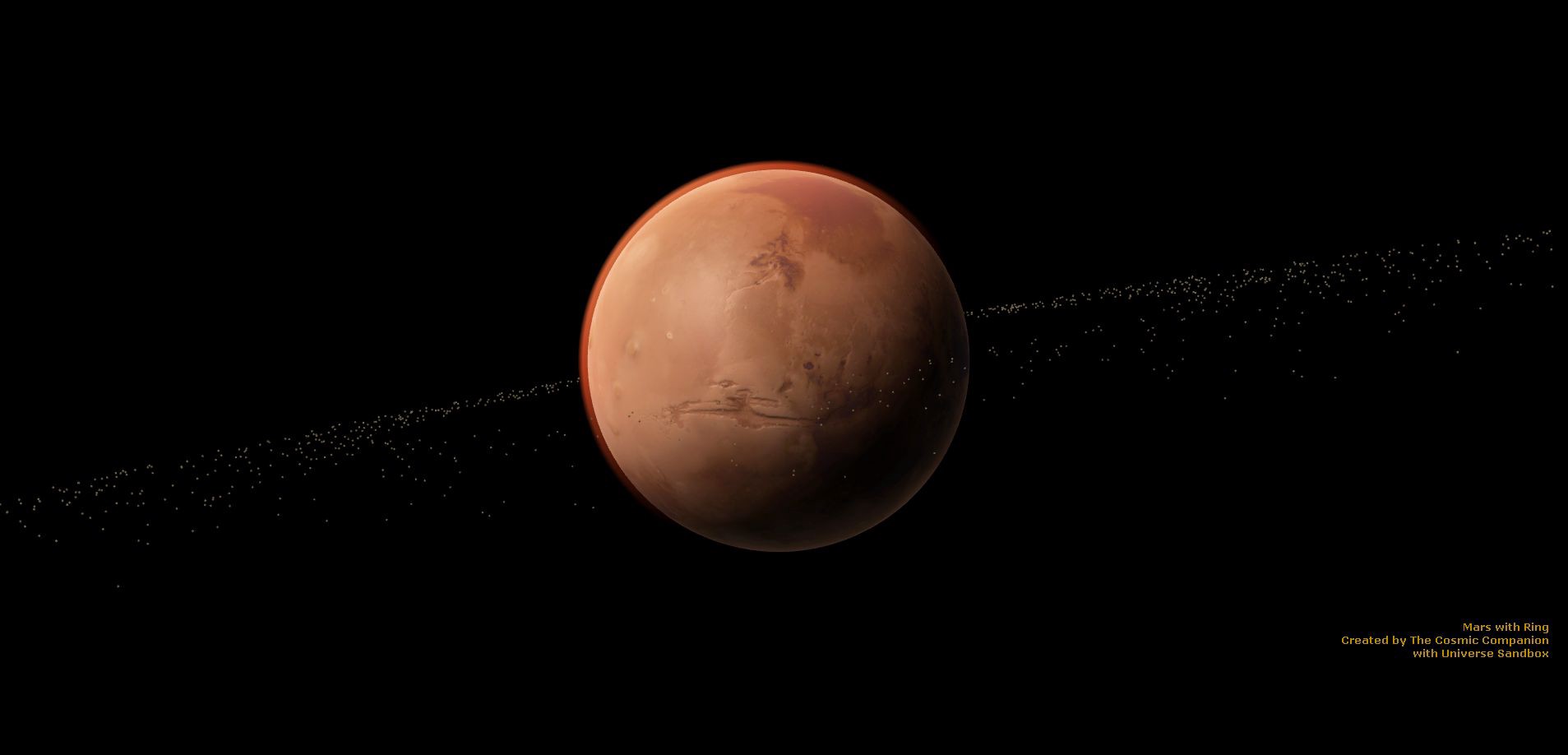Rockin’ in the Mars room…
Phobos, the innermost of the two moons of Mars, orbits a mere 6,000 kilometers (3,700 miles) above the surface of Mars, orbiting Mars once every four hours. It is also slowly losing altitude. At some time in the future, this small moon will skirt too close to Mars, and gravitational forces will cause it to shatter, forming a new ring for the Red Planet.
<p id="99b8" class="ix jl fr bk iz b ja jb jm jc jd jn je jf jo jg jh jp ji jj jq jk gp" data-selectable-paragraph="“>Deimos, meanwhile, maintains a safe distance of more than 20,000 km (nearly 12,500 miles) above the ruddy Martian surface.
The orbits of these diminutive moons are much more circular than would be expected if they were once asteroids, captured by the gravitational forces >of Mars.
Researchers suggest a cycle of moons may have formed, and shattered, repeatedly over Mars during the course of billions of years.
“The ring forms the moon on the outer edge, then the moon interacts with the ring and while the moon’s orbit grows, the ring falls onto Mars. Once the ring is gone, the moon spirals in due to Martian tides. Once the moon gets very close to Mars, it is pulled apart by Martian tides and it forms a new (less massive) ring, and the process repeats,” Ćuk described for The Cosmic Companion.
Each time, the debris formed rings which, in turn, coalesced back into moons. With some material lost with each cycle, the moons and rings became less massive.
“[At] the time of the interaction with Deimos, the ring was probably stretching out to about three Mars radii or so, and its initial mass was about 100 Phobos masses, but it lost some of that mass by the time the proto-Phobos was formed,” Ćuk explains.
This new study showed that a newly-formed moon would move away from the planet and ring in a manner which would produce the two-degree tilt. Examination of these forces reveal they could only be produced by an outward-moving moon pushing an inner moon outward, away from Mars.
This moon may have been 20 times as massive as Phobos, and this body, which may have existed three billion years ago, may be thought of as a grandparent of that Martian moon.
This new finding suggests that for much of its history, Mars was surrounded by a ring like the ones around the giant planets of our solar system (although smaller).
Deimos is billions of years old, while researchers speculate Phobos is a “mere” 200 million years old, forming around the same time dinosaurs first walked the Earth.
So far, no mission has been sent, specifically, to study this pair of minuscule moons. In 2024, the Japanese space agency JAXA will launch a spacecraft to Phobos, where it will collect a sample to bring to Earth for analysis.
This study, presented at the virtual 236th Meeting of the American Astronomical Society, held virtually on June 1–3, 2020, was also accepted for publication in the Astrophysical Journal Letters.
This idea, if correct, could provide a whole new look at what Mars may have looked like in the distant past.
This article was originally published on The Cosmic Companion by James Maynard, founder and publisher of The Cosmic Companion. He is a New England native turned desert rat in Tucson, where he lives with his lovely wife, Nicole, and Max the Cat. You can read this original piece here.
Astronomy News with The Cosmic Companion is also available as a weekly podcast, carried on all major podcast providers. Tune in every Tuesday for updates on the latest astronomy news, and interviews with astronomers and other researchers working to uncover the nature of the Universe.


